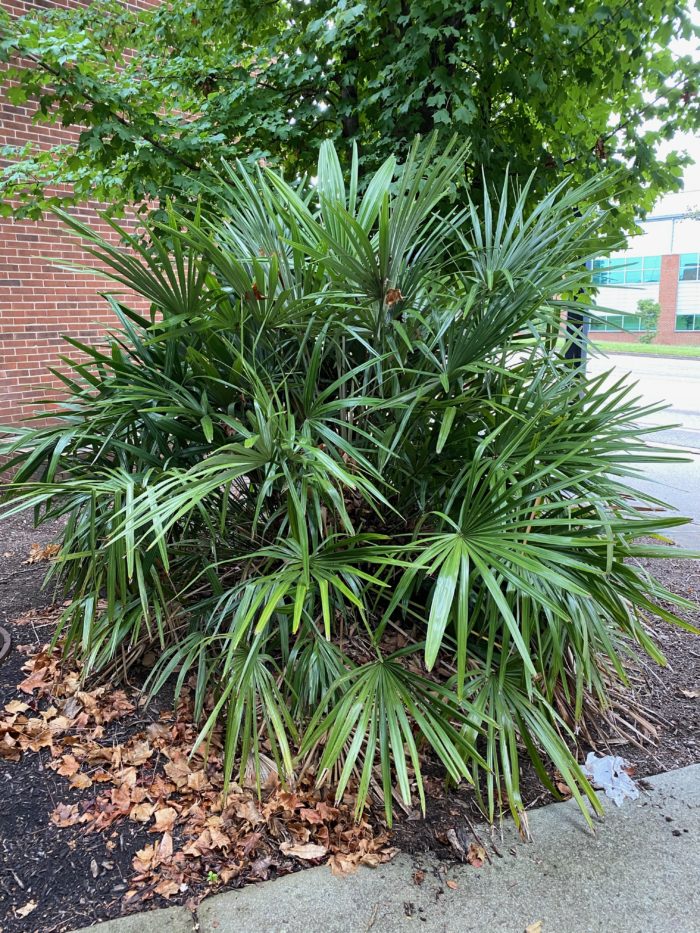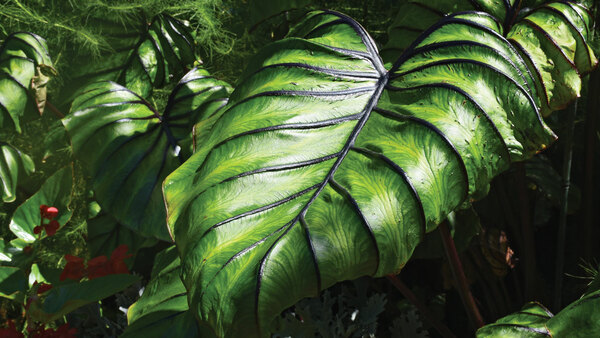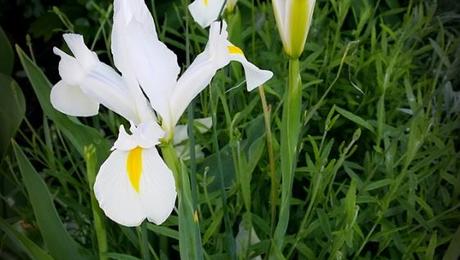
There is more to palms than coconuts and tropical islands. The more you get to know this wonderful group of plants, the more you realize how diverse they can be. In fact, the palm family, Arecaceae, contains thousands of plants. These include well-known palms with tall trunks, but also many shrubby and even some climbing palms. There are many Southern gardeners who are adept at growing palms in their landscapes. However, as you move to less coastal regions of the South, we don’t often think about adding palms to our landscape. Needle palm (Rhapidophyllum hystrix, Zones 7–10) stands out as one of the hardiest and easiest palms to grow in the South.
A Cold-Hardy Native
Needle palm is a shrubby palm native to central Florida, the Florida panhandle, and lower Alabama and a few surrounding areas. In the wild this plant has lost habitat and been commercially exploited. However, it is available from a variety of reputable nurseries. One of this palm’s greatest attributes is its cold hardiness. It can survive short periods down to 0°F, and it performs well in USDA Hardiness Zones 7–10. I have even seen it grown in protected areas of Zone 6b.

Wicked Defenses
Needle palm has large dissected leaves radiating from a central crown at the base of the plant. At the base of those leaves are the “needles” that act as a natural barrier from any creature that might want to get into the plant’s interior. Although I have never seen it happen in person, I have heard stories of small rodents meeting their demise after getting too close to the base of this palm.
Finding a Good Home
Needle palm grows in moist environments, particularly on forested slopes. I have seen it thrive in the landscape in places where gardeners have cracked the code on the magical balance between moisture and good drainage at the same time. This is an understory plant in the wild, and it appreciates some shade, particularly in the afternoon. I have also seen it do well in places where brick buildings provide a good combination of radiant heat, shade, and winter protection.
Supporting Young Plants
In many cases, it’s fine to transplant very young plants out into the landscape. However, if you purchase a needle palm and it’s very small when it arrives, it might be best to grow it in a pot for a few years. If its current pot size is adequate, I suggest using it as part of a mixed container during its first growing season. You can simply bury the plant, container and all, and then remove the container during colder weather. Overwinter your small plant in a protected part of the garden or the window of an unheated garage. Needle palm is best planted in spring to allow for a season of establishment before encountering cold weather.
 |
 |
Tropical Interest
If you’re looking to add something different to your landscape that also has a tropical vibe, this just might be your plant. Once established, it requires very little maintenance and is a trouble-free addition to the landscape. Again, spring would be the best time to add this palm to your home garden. However, even if it isn’t spring, take some time to scope out a future home in your garden for this wonderful Southern native.
Let’s take a closer look at this beautiful plant:
—Andy Pulte is a faculty member in the plant sciences department at the University of Tennessee.
Fine Gardening Recommended Products

A.M. Leonard Deluxe Soil Knife & Leather Sheath Combo
Fine Gardening receives a commission for items purchased through links on this site, including Amazon Associates and other affiliate advertising programs.



















Comments
Log in or create an account to post a comment.
Sign up Log in